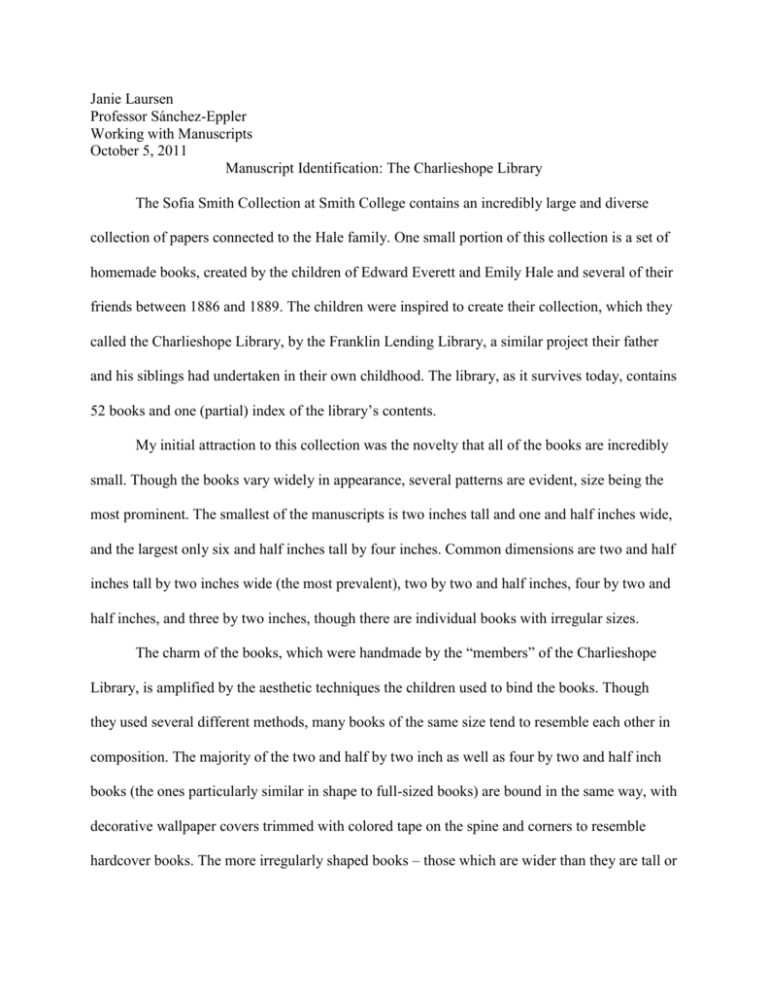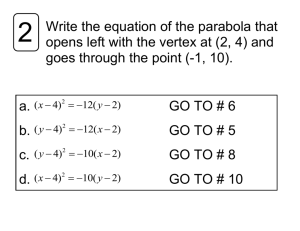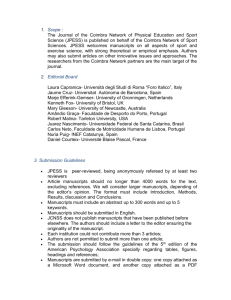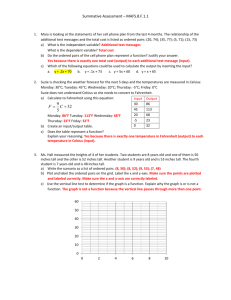Janie Laursen - Amherst College
advertisement

Janie Laursen Professor Sánchez-Eppler Working with Manuscripts October 5, 2011 Manuscript Identification: The Charlieshope Library The Sofia Smith Collection at Smith College contains an incredibly large and diverse collection of papers connected to the Hale family. One small portion of this collection is a set of homemade books, created by the children of Edward Everett and Emily Hale and several of their friends between 1886 and 1889. The children were inspired to create their collection, which they called the Charlieshope Library, by the Franklin Lending Library, a similar project their father and his siblings had undertaken in their own childhood. The library, as it survives today, contains 52 books and one (partial) index of the library’s contents. My initial attraction to this collection was the novelty that all of the books are incredibly small. Though the books vary widely in appearance, several patterns are evident, size being the most prominent. The smallest of the manuscripts is two inches tall and one and half inches wide, and the largest only six and half inches tall by four inches. Common dimensions are two and half inches tall by two inches wide (the most prevalent), two by two and half inches, four by two and half inches, and three by two inches, though there are individual books with irregular sizes. The charm of the books, which were handmade by the “members” of the Charlieshope Library, is amplified by the aesthetic techniques the children used to bind the books. Though they used several different methods, many books of the same size tend to resemble each other in composition. The majority of the two and half by two inch as well as four by two and half inch books (the ones particularly similar in shape to full-sized books) are bound in the same way, with decorative wallpaper covers trimmed with colored tape on the spine and corners to resemble hardcover books. The more irregularly shaped books – those which are wider than they are tall or are square – generally are more simply constructed, with just a decorative paper cover. Two of the books – a two volume story entitled “Flossie and Dick,” which were Zelle Costello’s only contribution to the library – differ noticeably from what emerges as standard formatting for these books in that its corners have been cut to be rounded, though the job was not done particularly neatly. A few of the books are bound in the same paper they are written on, and some have no cover at all. Just as the cover styles of the books differs widely, so does the formatting of the title and cover pages. Many of the books include a formal cover page including the title, often the author (though many are unattributed), and, occasionally, a table of contents. They also frequently include the name of the “publisher” of the book, primarily listing “Morse Hale, & Co.” Very few are dated, though the majority of those which are note the year 1866. Occasionally, the cover will also feature labels, not only of the book’s title but also organizational keys. At least ten of the covers have small, diamond shaped white stickers with a number on them, and several have a number followed by “shelf” listed. The paper used for the interior of these books is inconsistent; it seems that the children used whatever paper was available. While some of the books are written on plain white paper, many use various types of lined paper, and some show remnants of previous use. The first volume of “Flossie and Dick,” for example, uses a piece of paper which shows a portion of an embossed seal, of which only “shers & Chapin – Boston” is visible. The stories range in length: whilemany of the books are neatly filled with one, two, or three different plots, some require several volumes, such as “The Desk Stories,” which fill three books. Contrarily, several of the books remain unfinished. The majority of the volumes also include illustrations, some using only half of a page while other more elaborate pictures are given entire pages to themselves. The books are equally diverse in the genre of their contents. Fairy stories are prominently featured in the collection, including stories such as “The Fairy that Lived in a Tree,” “Fairy Stories,” and “The Fairy Festival.” Other fantastic storylines are also used, like “What the Playthings Said to Each Other on Midsummer Night,” a story written by one of the children under the alias of “A Robin” about toys that come alive. However, the contributors did not limit themselves to fantasy, but also wrote many adventure stories, including plots about shipwrecks and the Civil War. This wide assortment of subject matter can be analyzed from many different perspectives. What the children chose to write about, and the style in which they wrote, is highly reflective of the kinds of literature they were themselves reading. The plots the authors create clearly resemble established genres of literature, some of which are not necessarily explicitly “children’s” literature. Simultaneously, the children’s choices also reflect their own understanding of what literature is. One book is titled “The Lady in Brown: A Fairy Story for Little Children.” This clearly stated intention as for children shows a complex relationship between what they understand as children’s literature and how they themselves produce literature for other children. I find the sheer amount of variety in size, construction, format, and content one of the most attractive aspects of this set of manuscripts. The children had both published books and the Franklin Lending Library after which to model their enterprise, yet the Charlieshope Library retains a very distinct sense of individualism and personality. Though the library was clearly intended to be a miniature version of a real library, the leniency with which the children approached the format books should take is an interesting issue. While many of the books are designed to resemble hardcover published books as possible, the children also contributed very plain manuscripts that hardly resemble hardcovers at all. This range suggests that though part of the play of the library was to practice printmaking, the importance of the stories themselves was also clearly on their minds. The authors themselves are interesting on several levels. The most prolific author of the library was Ellen Day Hale, otherwise known as Nelly. Clearly the primary organizer and participant of the library, Nelly wrote twelve of the surviving books and co-authored three others. Nelly’s contributions are particularly noticeable for their extensive and often elaborate illustrations. As Ellen grew up to become a professional artist, these illustrations are fascinating examples of her early work. The library is also appealing because although it was inspired by earlier Hales and stayed in the Hale household, the majority of the members were not family members but rather friends of Ellen and her brother Arthur. The non-Hale authors, of which there are at least twelve represented in the surviving books, suggests that creating a community of both authors and readers was important to the young Hales. Their interest not only in producing their own books but in encouraging their friends to also create and read suggests that the children not only had an awareness of how books were made but also the role books play in a larger, communal context. I also find it remarkable that the majority of these authors – at least nine of the fifteen explicitly declared writers – are girls. I theorize that this might be because authors were solicited from amongst Nelly’s friends, rather than Arthurs’, as she appears to be the one who led the project. Nevertheless, the interest of young girls in participating in the creation of books and their having the opportunity to do so in a mock-professional way is a fascinating situation. One of the strengths and challenges with working with this collection of manuscripts is the large number of analytical angles the library lends itself to. Questions of children’s play as imitation of adult professions, female authorship, the role of both adult and children’s literature in children’s lives, and the role of books in a larger community are all compacted into the manuscripts. All of these questions stand out as possible and likely fruitful areas of investigation as I continue with my work on these manuscripts, and I am sure that even more areas of interest will arise as I dig deeper into their contents and context.







